Results 7,381 to 7,390 of 12096
Thread: Anandtech News
-
09-28-17, 08:03 AM #7381
Anandtech: The Team Group T-Force Cardea (240GB) SSD Review: Grace Under Write Pressu
The Team T-Force Cardea takes a standard Phison E7 M.2 NVMe SSD and mounts a serious heatsink to ensure thermal throttling is not a problem. We compare the 240GB model against higher-capacity SSDs based on the same Phison reference design, and against some of the best NVMe SSDs of similar capacity.
More...
-
09-28-17, 09:05 AM #7382
Anandtech: Toshiba Announces 10 TB MG06ACA HDD: Seven Platters, 237 MB/s, NAND Cache
Toshiba has announced its new enterprise-grade MG06ACA-series hard drive with a 7200 RPM spindle speed and up to 10 TB capacity. The new units have a new design as well as up to seven platters. Performance and reliability ratings of the MG06ACA-series drives are on par with other enterprise-class HDDs. In addition to the 10 TB model, Toshiba also has a 6 TB and an 8 TB model in the MG06ACA lineup.
Toshiba’s 10 TB hard drive is based on the company’s new platform featuring up to seven PMR platters along with a 7200 RPM spindle speed and the company’s persistent write cache. Toshiba’s PWC with power loss protection (PLP) stores data that is not yet written to the HDD media. Previously such feature was only found on enterprise-grade 10K and 15K hard drives to improve reliability, but Toshiba is installing it on nearline drives as well. There are several circumstances when the PWC with PLP can be useful. First, when the HDD write cache contains data not yet written to media and a power loss happens, the data is automatically moved to non-volatile memory (the drive collects energy from the spinning media). Second, when a drive with 4K sectors emulates 512B sectors, it has to perform the read-modify-write (RMW) operation to align the source write request with the physical sectors it has to modify and thus uses write cache. This slightly reduces system performance because it requires an extra spin of a disk (or more) and if a power loss occurs, a significant amount of data may get lost. Clearly, if a power loss takes place before the data is transferred to the PWC, it is gone anyway. Speaking of reliability in general, Toshiba rates the MG06ACA HDDs for 550 TB annual workload as well as for 2.5 million hours MTBF rating.
Toshiba does not say whether its 10 TB HDD uses helium, but based on power consumption (up to 10 W) and images of a disassembled drive that lacks hermetic capsule (that has a very distinctive look), the manufacturer has managed to squeeze in seven platters into a drive without using helium. Such move makes production of the drives a bit easier, but at the cost of slightly higher power consumption and a bit lower performance. Keep in mind that the persistent write cache also consumes power and therefore increased power consumption may also be a result of higher reliability.
When it comes to performance, the 10 TB MG06ACA HDD is a tad slower than competing HDDs featuring helium inside — it is speced for 237 MB/s sequential data transfer rate, which is slightly lower compared to around 250 MB/s offered by some rivals. If the drive is not helium-based, this slightly lower performance is explainable — it is harder for arms and heads to move in air environment (which has 7x higher density than helium), so “air” drives are a bit slower than helium-filled HDDs. On the other hand, the 6 TB and the 8 TB MG06ACA-series hard drives are speced for 230 MB/s sequential data transfer rate, which is a bit faster than competing HDDs of the same capacity. Unfortunately, Toshiba does not disclose which platters it uses for the lower-capacity MG06ACA drives.Brief Specifications of Toshiba's MG06ACA HDDs Capacity 10 TB 8 TB 6 TB P/N 4K Native MG06ACA10TA MG06ACA800A MG06ACA600A 512e MG06ACA10TE MG06ACA800E MG06ACA600E 512e SIE MG06ACA10TEY MG06ACA800EY MG06ACA600EY RPM 7200 RPM Interface SATA 6 Gbps DRAM Cache 256 MB Persistent Write Cache Yes Helium-Filling Unknown, likely not Data Transfer Rate (host to/from drive) 237 MB/s 230 MB/s MTBF 2.5 million Rated Annual Workload 550 TB Acoustics (Seek) 34 dBA Power Consumption Random read/write 10 W 9.1 W 8.3 W Idle 7.3 W 6.4 W 5.6 W Warranty 5 Years
At present, Toshiba offers its MG06ACA drives with the SATA interface. In addition to regular HDDs with 4K native sectors, there are versions with 512e sectors as well as flavors with Sanitize Instant Erase (SIE) feature.
Related Reading:
- Seagate Announces Enterprise Capacity 12 TB HDD: 2nd-Gen Helium-Filled Hard Drives
- Seagate Confirms Plans for 12 TB HDD in Near Future, 16 TB HDD Due in 2018
- Western Digital Ships 12 TB WD Gold HDD: 8 Platters and Helium
- Western Digital: Sales of Helium-Filled HDDs Accelerating, 15M Sold So Far
- Western Digital Starts Shipments of HGST Ultrastar He12 12 TB HDDs
- Toshiba's 8 TB X300 HDD Now Available: 7200 RPM Drive For Under $260
- Toshiba Launches N300 HDDs for NAS: Up to 8 TB, Up to 240 MB/s
More...
-
09-28-17, 06:07 PM #7383
Anandtech: Gigabyte Releases AORUS GTX 1080 Gaming Box: Upgraded GPU, Same Size Chass
Following on the heels of the AORUS GTX 1070 Gaming box, a eGFX solution for laptops and ultrabooks, GIGABYTE and the AORUS brand take performance to a higher level by installing a more powerful graphics card inside the same chassis. Instead of a GTX 1070, a fully appointed GTX 1080 finds its way into the diminutive Gaming Box offering users another option for higher performance out of their eGFX solution.
The 212 x 96 x 162mm (8.34” x 3.77” x 6.37”) Gaming Box is small enough to sit on the desk or even to carry with its included carrying case. Its footprint is notably smaller than the ASUS ROG XG Station measuring 312 x 170 x 44mm and most other competitors. As far as looks, the all black aluminum case displays the AORUS Falcon proudly flexing its wing on the front panel. Both sides of the chassis are covered with mesh allowing for airflow inside the case. Active cooling is provided by a large 130mm fan on the left side taking air in and feeding it directly to the video card inside. The 1080 Gaming box also integrates RGB LEDs at the bottom of the fan side which can be controlled by GIGABYTE’s RGB Fusion software.
The Thunderbolt 3 connected eGFX device allows for plug-and-play attachment (no reboot necessary) to your laptop or ultrabook providing users a significant graphics boost when compared with the integrated graphics solution found on most portable devices. Powering the enthusiast class GTX 1080 is an included a 450W, 80 Plus Gold certified power supply. The 1080 inside is clocked at 1607/1733 MHz Base/Boost in Gaming mode and 1632/1771 MHz in OC Mode. The 8GB GDDR5X comes in at 10010 Mhz. Around the back of the device, we find a standard fare of video outputs consisting of DisplayPort, HDMI, and a DL-DVI can connect up to four external monitors simultaneously.
Outside of improving graphics performance, the Gaming Box also serves as a complete docking station. It is able to charge the connected laptop with a maximum output of 100W while still powering the GTX 1080. Additionally, there are three USB 3.0 ports for connecting peripherals or external storage. There is also a quick charge USB 3.0 port that allows for personal mobile device charging at, “…up to 4 times the speed of a conventional charger.”, according to Gigabyte.
Pricing nor availability for the AORUS GTX 1080 Gaming Box were released by Gigabyte. The 1070 Gaming Box can currently be found on Newegg for $590, so our expectation is the 1080 Gaming box will be around $750.AORUS GTX 1080 Gaming Box Graphics Processing GeForce GTX 1080 Box Size 212 x 96 x 162mm
8.34” x 3.77” x 6.37”Box Weight 2370g (5.22lbs) PSU 450W, >90% efficiency (80+ Gold)
PCIe 8-pin powerAC Input 100-240V ~ /7-3.5A / 60-50Hz Graphics Card GIGABYTE GeForce GTX 1080 8G
OC Mode: Base - 1632 MHz, Boost - 1771 MHz
Gaming Mode: Base - 1607 MHz, Boost - 1733 MHzMemory Type / Size / Clocks GDDR5X / 8GB / 10010 MHz Package Content AORUS GTX 1080 Gaming Box
(inc. GIGABYTE GTX 1080 8G Graphics Card)
Thunderbolt 3 Cable 500mm (USB Type-C)
Power Cord
Installation Guide
Driver CD
Carry Bag
Related Reading:- Aorus Announces the GTX 1070 Gaming Box eGFX Adapter
- ASUS ROG XG Station 2 eGFX Enclosure with Thunderbolt 3 Launched
- AKiTiO Introduces Node: Thunderbolt 3 eGFX Box for $299
- Powercolor Announces Devil Box: Thunderbolt 3 eGFX Enclosure
Gallery: AORUS GTX 1080 Gaming Box





More...
-
09-28-17, 07:50 PM #7384
Anandtech: Toshiba Signs Deal To Sell Memory Business
After being approved by the board of directors last week, Toshiba's deal to sell their memory business to a consortium led by Bain Capital has been signed and will be on the ballot for approval at a shareholders meeting on October 24. With the signing of the deal, Toshiba has officially disclosed more details about the agreement, but several key aspects are still subject to change, pending Western Digital's ongoing legal actions regarding the Toshiba-SanDisk joint ventures. Toshiba plans for the deal to close by the end of March 2018. The deal still also needs approval from government regulators over its antitrust and national security implications.
Earlier this year, Toshiba spun off most of their memory business into Toshiba Memory Corporation (TMC) as preparation for the sale. The deal signed today is for the sale of all shares of TMC to a special-purpose acquisition company controlled by the Bain Capital-led consortium of investors. That purchasing company, named K.K. Pangea, will fund its purchase of TMC by a combination of investments and loans from the consortium and other banks. The complete breakdown of investments has not been released, but the main sources of funding are:
In addition to the ¥1.4 trillion in investments, Pangea needs to secure about ¥600B in loans to complete the roughly ¥2T purchase. The final purchase price can still be affected by Western Digital's litigation and changes in TMC's finances between now and the closing of the deal.K.K. Pangea Investors Investor Billion ¥ Toshiba Corporation 350.5 Bain Capital Private Equity 212 Hoya Corporation 27 SK Hynix 395 US Investors (Apple, Kingston, Seagate, Dell) 415.5
Control of TMC will not be proportional to investment. Toshiba and Hoya will together own more than 50% of the common stock, so regulators can be assuaged that control will remain with Japanese companies. Despite their large investment, SK Hynix will be limited to controlling no more than 15% of the voting rights in Pangea or TMC for the next 10 years, and they will not be permitted access to TMC trade secrets or other proprietary information. The American technology companies investing in Pangea, all major customers of Toshiba flash memory, will not obtain any common stock or voting rights.
The Innovation Network Corporation of Japan (INCJ) and Development Bank of Japan (DBJ) have been involved in several of the bids for TMC, but are not investing at this time. There appear to be plans for both organizations to make investments in the future through Toshiba and to exercise some of Toshiba's voting rights in Pangea, but the specifics of this arrangement have not been disclosed.
Toshiba's joint ventures with SanDisk/Western Digital are a source of uncertainty. Three entities (Flash Partners, Ltd., Flash Alliance, Ltd., and Flash Forward, Ltd.) are currently still held jointly by Toshiba and SanDisk, and Western Digital may be able to prevent Toshiba from transferring their share to TMC. Western Digital is also seeking an injunction to prevent Toshiba/TMC from making new unilateral fab investments without giving SanDisk an opportunity to also invest. Toshiba's announcement also acknowledges the possibility that their transfer of TMC shares to Pangea could be entirely blocked by an injunction.
More...
-
09-29-17, 08:23 AM #7385
Anandtech: The ASRock Z270 Supercarrier Motherboard Review: 4-way SLI and 5 Gigabit E
In this review we are having a close look at ASRock’s Z270 Supercarrier, an apical motherboard that is targeting design professionals and hardcore gamers. The motherboard is bristling with features, some of which cannot be found on middle-range designs, and yet it retains a standard ATX form factor. The combination of the above however had the predictable side effect of a sizable price tag.
More...
-
09-29-17, 09:07 AM #7386
Anandtech: In Win Launches Polaris RGB Premium Fan Series: Aluminum Frame, RGB Sync C
In Win, best known to most for their PC chassis, announced its new Polaris case fan series. The new Polaris fans differ from their Aurora fan lineup in a few ways. First, the frame on the Polaris is not square but uses a round transparent frame. Second, the Polaris lineup is made for silence, while the Aurora is made for performance (having slightly higher CFM and static pressure values), and a different overall aesthetic; more of a traditional case fan look.
The Polaris lineup comes in one size, 120mm x25mm, and three different flavors; Polaris LED, Polaris RGB, and Polaris RGB Aluminum. The base model, the Polaris LED, is available in multiple colors including white, blue, green, and red. The six hub-embedded LEDs shine through frosted fan blades and transparent PBT frame for a unique visual display. The RGB models swap out the single color LEDs for RGB LEDs allowing users to fully customize the color. They also sync with most motherboards equipped with RGB control including ASUS’ AURA SYNC, MSI’s Mystic Light Sync, and GIGABYTE’s RGB Fusion software. The RGB Aluminum model swaps out the transparent frame for a diamond-cut, laser-etched aluminum housing and is the flagship model of the Polaris lineup.
The PWM controlled silent fan is said to produce only 20.2dB while pushing 43.31 CFM at 1.26mm/H20 static pressure at its maximum speed of 1280 RPM. Power use for the fan alone is rated at 1.2W/0.10A. Combined with the RGBs, it is 2.4W/0.20A. The light power can allow a couple to be daisy-chained together using the same motherboard header. In Win includes its own 8-pin connecting wires ( 800mm and 100mm) to connect from fan to fan and minimize cable clutter inside the chassis. A total of eight fans can be daisy-chained together.
The Polaris fans use a sleeve bearing in the hub while In Win puts the life expectancy at 35000 hours. This is slightly less than the Aurora models rated for 36000 hours. The big difference is the Aurora fans life expectancy values are rated at 40C while the Polaris models are much lower at 25C. One can’t tell how much, if any, this will reduce life expectancy on the Polaris line running above 25C, but I have to imagine there will be plenty of instances where internal case temperatures go above the 25C mark. The circular PBT or aluminum frame drops right into a shockproof frame to mount to the case. The frame uses rubber stands to reduce vibrations transmitted to the case.
One item to note when considering these fans: Users are required to purchase the two fan package before the single fan package. Per In Win, the Polaris RGB single pack will not operate on its own, you must the Polaris RGB Twin Pack first and daisy-chain them together. The twin pack includes the needed cables while the single fan is intended to be an add-on. MSRP on the twin pack is $39 while the single is $20.
Related Reading:In Win Polaris RGB Fan Series Warranty Period 2 Years Product Page Link Price $39 (Twin Pack) / $20 (Single) Size 120 x 120 x 25mm Material PBT, PC Starting / Rated Voltage 5V / 12V Rated Power / Current 1.2W / 0.10A RGB Rated Power/ Current 1.2W / 0.10A Speed Mode 500~1280 RPM Air Flow 43.31 CFM Air Pressure 1.26mm/H20 Fan Connector 8-pin Modular Noise Level 20.2dB(A) Bearing Type Sleeve Bearing Life Expectation 35,000 hours @ 25C Gross Weight 362g (2 P ack) / 178g (1 pack) Package Contents Dual Package
2 x Polaris Fans
8 x Screws
1 x RGB-Y Cable (Mobo to fan)
1 x 8-8 pin 800mm (fan to fan)
1 x 8-8 pin 100mm (fan to fan)
1 x 4-pin HeaderSingle Package
1 x Polaris Fans
4 x Screws
1 x RGB-Y Cable (Mobo to fan)
1 x 8-8 pin 800mm (fan to fan)
1 x 8-8 pin 100mm (fan to fan)
1 x 4-pin Header
- EKWB Releases New Varder EVO Fan with Start-Stop Function
- Scythe Announces Mugen 5 CPU Cooler: New Design, Fan, and Mounting
More...
-
09-29-17, 10:16 AM #7387
Anandtech: Amazon Launches Fire TV 2017: 4Kp60, HDR, Dolby Atmos, Alexa Voice Remote
Amazon this week introduced its third-generation Fire TV streaming media player. The new TV appliance adds 4Kp60 decoding support with HDR along with Dolby Atmos, improving quality of video and audio playback. Besides, the third-generation Fire TV comes with the Alexa Voice Remote, making it easier to use various services using voice control. This time Amazon decided not to release a gaming version of the device, indicating that this type of entertainment is not going to be a primary purpose of the device.
Amazon redesigned the third-generation Fire TV STB quite significantly when compared to the first- and second-gen units. The company wanted to make the new product as small as possible and has actually succeeded in doing so by nearly halving the dimensions of the 2nd gen Fire TV. In a bid to reduce the form-factor, Amazon had to remove integrated Ethernet port, microSD card reader and USB 2.0 Type-A connector. The move somewhat reduces functionality of the new STB because now it cannot be used to watch content from microSD cards and USB drives. Meanwhile, when it comes to wireless connectivity, the new Fire TV has all the same features as the predecessor: it has a 802.11ac with 2×2 MIMO Wi-Fi controller and supports Bluetooth 4.1.
Besides the aforementioned external changes, there are major internal changes as well. Amazon picked up the Amlogic S905Z SoC for the 3rd gen Fire TV. The chip integrates four ARM Cortex-A53 general-purpose cores as well as a triple-cluster ARM Mali450 graphics engine. The SoC decoding H.265 Main 10 Profile Level 5.0 with HDR10 as well as VP9 Profile 2 with HDR10. In addition, the S905Z supports Dolby Atmos (EC3_JOC) audio. In any case, the addition of 4K at 60 Hz, HDR10 and Dolby Atmos looks like a major upgrade for the Fire TV, which will enable higher video playback quality compared to predecessors on appropriate 4K HDR TVs.
In fact, 4Kp60 video decoding, HDR10, Dolby Atmos support and cost were probably among the main reasons why Amazon decided to choose the Amlogic S905Z SoC. The latter is slower than the MediaTek MT8173C found in the 2nd gen Fire TV both in terms of general purpose and graphics performance since the MediaTek chip has two high-end Cortex-A72 cores running at nearly 2 GHz and a newer PowerVR GX6250 graphics engine. By contrast, the S905Z features four low-power Cortex-A53 cores and the Mali450 MP3 GPU based on a 2012 architecture. The choice of SoC also affected positioning of the new Fire TV: Amazon no longer positions it as a medial player and a small form-factor game console, thus, it does not offer a version bundled with a gamepad. Of course, the device will run certain casual games for Fire OS, but do not expect it to show beautiful 3D graphics, especially in a 4K resolution.
There are some other things to note about the 3rd gen Fire TV besides the new Amlogic S905Z SoC. The new unit only supports decoding H.264, H.265, and VP9 video, as support for H.263, VP8, and MPEG4 were removed. This may not be a major problem though. The new STB does not have any external connectors and therefore it is impossible to watch content from cards or USB drives, whereas major services rely mostly on H.264, H.265, and VP9 technologies.
Amazon has begun to take pre-orders on the new Fire TV. The unit costs $69.99 if bought separately and $79.99 when acquired with an Amazon Echo Dot.Amazon Fire TV Specifications Fire TV Edition Fire TV
Stick 2016Fire TV
2014Fire TV
2015Fire TV
2017SoC Model MStar-T1 938 (MSDUAV16B-A-008T) MediaTek MT8127D Qualcomm Snapdragon 600 APQ8064 MediaTek MT8173C Amlogic
S905ZCPU 2×Cortex A72
2×Cortex A53
Up to 1.1 GHz4×Cortex A7
at 1.3 GHz4×Krait 300
at 1.7GHz2×Cortex A72
at 1989 MHz
2×Cortex A53
at 1573 MHz4×Cortex A53
at 1.5 GHzGPU Mali-T820-MP3 Mali450 MP4 Adreno 320
at 400 MHzPowerVR GX6250 at 600MHz Mali450 MP3 RAM 3 GB 1 GB 2 GB Storage 16 GB + SD 8 GB 8 GB + microSD 8 GB Wi-Fi 802.11ac 2×2 MIMO802.11n 2×2 MIMO802.11ac 2×2 MIMOBluetooth BT 4.1 Ethernet 100 Mbps optional 100 Mbps optional USB USB 3.0 Type-A none USB 2.0 Type-A none Video Output Connector internal HDMI 1.4 HDMI 2.0 HDMI 2.0a Video Output Resolution 3840×2160
at 60 Hz1920×1080
at 60 Hz1920×1080
at 30 Hz3840×2160
at 30 Hz3840×2160
at 60 HzHDR - HDR10 Audio Output internal HDMI HDMI
Optical Audio (TOSLINK)HDMI Audio Features - Dolby Audio pass through via HDMI Dolby Atmos 7.1,
DA 5.1 pass through via HDMI/opticalRemote Remote with voice search Remote with voice search Amazon Remote Amazon Remote Remote with voice search Media Formats Video H.263
H.264
H.265
VP8
VP9
MPEG4-ASP_L5H.263
H.264
H.265
MPEG4-ASP_L5H.263
H.264
MPEG4-ASP_L5H.263
H.264
H.265
VP8
VP9
MPEG4-ASP_L5H.264
H.265
VP9Audio AAC-LC, AC3 (Dobly Digital), eAC3 (Dolby Digital Plus), HE-AACv1, HE-AACv2, FLAC, MP3, PCM/Wave, Vorbis AAC-LC, AC3 (Dobly Digital), eAC3 (Dolby Digital Plus), FLAC, MP3, PCM/Wave, Vorbis, Dolby Atmos (EC3_JOC) Images JPEG, PNG, GIF, BMP PSU internal 5 W, internal 16 W, external 21 W, external external Dimensions - 86×30×12.6mm ? 115×115×17.8mm 65×65×15mm Price at Launch - $39.99 $99.99 ? $69.99 Detailed Specs Link
Buy Apple Fire TV 2017 on Amazon.com
Related Reading:
- Amazon Releases New Fire TV (2015)
- Roku Unveils 2016 Streaming Media Players with 4Kp60 and HDR Support
- Xiaomi Mi Box Now Available in U.S.: Android TV 6.0 with 4Kp60 Output for $69
- Google Announces Chromecast Ultra: 4K & HDR for Chromecast
- Microsoft’s Project Scorpio Gets a Launch Date: Xbox One X, $499, November 7th
- NVIDIA Releases Android 7.0 Update for 2015 SHIELD TV, Adds Amazon Video App
- NVIDIA Launches SHIELD TV: Smart Home Functionality, More 4K HDR Streaming Services
More...
-
09-29-17, 11:16 AM #7388
Anandtech: Samsung Details 11LPP Process Technology: 10 nm BEOL Meets 14 nm Elements
Samsung has added a new manufacturing technology into its roadmap. The 11LPP fabrication process is designed for mainstream and higher-end smartphone SoCs. The technology will come online next year and will build upon the company’s 14- as well as 10 nm-branded process technologies.
The Samsung 11LPP process is another hybrid process technology designed to speed up migration from one node to another by Samsung Foundry. Notably, the new node is not another 14LPP-based offering featuring 20 nm BEOL (back end of line) interconnects. Instead 11LPP is based on Samsung’s 10 nm BEOL and therefore enables smaller chips than technologies based on Samsung's 14 nm-branded offerings. Meanwhile, the 11LPP still uses some of the elements featured by Samsung's 14LPP fabrication process.
Last October Samsung began to produce ICs using its 10LPE (10 nm low-power early) manufacturing tech and these days Samsung is getting ready to start producing semiconductors using its 10LPP (10 nm low power plus) process. The company uses both fabrication technologies to make leading edge SoCs for smartphones and other devices, whereas mainstream, low-power and compact chips are to be products using its 14 nm-branded technologies.
The 11LPP will fill the gap between the 10 nm and 14 nm-based offerings. The technology is designed primarily to increase transistor density and provide further improvements on the frequency, transistor count and, to some degree, power consumption fronts. Samsung promises that it will deliver up to 15% higher performance compared to the 14LPP at the same transistor count and power. Furthermore, the 11LPP will enable up to a 10% area reduction at the same transistor count when compared to the 14LPP. In addition, the 11LPP will enable higher transistor density when compared to the 14LPP fabrication process.
Sometime next year, the company intends to start producing its most advanced SoCs using its 8LPP technology featuring EUV for select layers and thus speeding up their cycle times. Meanwhile, the introduction of the first commercial EUV process is not going to stop evolution of DUV technologies. In the coming quarters, Samsung intends to introduce its 14LPU and 10LPU fabrication processes for ultra-low-power applications as well as its all-new 11LPP, which will enable existing customers to shrink their SoCs.Advertised PPA Improvements of New Process Technologies
Data announced by companies during conference calls, press briefings and in press releasesSamsung 14LPP
vs 28LPP10LPE
vs 14LPE10LPE
vs 14LPP10LPP
vs 10LPE11LPP
vs 14LPPPower 60% 40% 30% ~15% ? Performance 40% 27% >10% ~10% 15% Area Reduction 50% 30% 30% none 10%
Samsung expects to begin production using its 11LPP manufacturing technology in the second half of 2018. Exact 11LPP high-volume manufacturing schedule of Samsung’s customers depends on their plans.
Related Reading:
- Samsung and TSMC Roadmaps: 8 and 6 nm Added, Looking at 22ULP and 12FFC
- Samsung Announces Exynos 8895 SoC: 10nm, Mali G71MP20, & LPDDR4x
- Samsung Foundry Announces 10nm SoC In Mass-Production
More...
-
09-29-17, 01:14 PM #7389
Anandtech: Lian Li Releases PC-Q38 Chassis: Small and Versatile mITX Case
Lian-Li has announced their latest small form factor (SFF) chassis, the PC-Q38. Lian-Li calls the full aluminum, windowed Mini-ITX case one that focuses on performance per liter, offers liquid-cooling potential, and for those who find the PC-Q37 is too big for their needs. Outside of being smaller than the ITX supporting models surrounding it, the styling has changed. A single power button surrounded by a blue LED sits in the middle of the gray (or silver) brushed aluminum face The edges are rounded lending it to a more classic and subdued look.
The PC-Q38 looks the part of an HTPC and does not take over the room with a flashy appearance. Due to its moveable rubber-padded aluminum feet, it is able to be oriented both vertically, with the windowed panel to the left, or laid horizontal with the window on top. All panels, excluding the front and windowed panel, have long holes cut into them for ventilation purposes while all are easily removed for cleaning. Dust filters were not included, so more frequent cleanings may be required.
The front panel is located on the top (while standing up) and has two USB3.0 ports as well as 3.5mm front panel microphone and speaker plugs. Though many of the latest mITX motherboards will have USB 3.1 (10 Gbps) Type-C port on their back panel IO, I would have liked to see it on the PC-Q38’s front panel as well considering motherboards are offering front panel connections in teh latest chipsets already.
Specifications show support for 2x 120mm fans up top and what looks to be another on the back. The top of the case is able to house up to a 240 x 120mm radiator, or if air cooling is the plan, a CPU cooler up to 145mm tall can fit. Graphics card support is up to (L)315mm x (D)142m (over 12.75” long); Enough room for most high-end GPUs. Users are able to mount three HDDs inside the case, two 2.5” and one 3.5”, which should be adequate for many users, particularly those using an M.2 drive. By default, the PC-Q38 requires a SFX based power supply up to 140mm. Lian-Li will offer an optional bracket in order to use the more common ATX form factor units. And with their footprint also coming down in size, options are available.
The Lian-Li PC-Q38 is available at Newegg for $109.99. The SFX to ATX PC-Q38-1 PSU kit will be available soon (price was not mentioned).Lian-Li PC-Q38 Mini-ITX Chassis Model PC-Q38 Case Type Mini Chassis Dimensions (W)180mm x(H)295mm x(D)372mm Color Black / Silver Front/Side Panel Aluminum / (L/R) Acrylic Body Material Aluminum Net Weight 2.5kg External Drive Bays None HDD/SSD Bays 1 x 3.5", 2 x 2.5" Expansion Slots 2 Motherboard Type Mini-ITX System Fan (Optional) 2x 120mm(top) I/O Ports 2x USB3.0, HD Audio VGA Card Support (L)315mm x (D)145mm CPU Cooling Support (H)140mm PSU Support SFX PSU,(L)140mm Radiator Support Top: 240mm x 120mm
Related Reading:- Lian-Li Reveals PC-V3000: Full-Tower Aluminum Chassis
- Lian-Li Releases PC-Q39 Tempered Glass Mini-ITX Tower
- Lian-Li PC-Q37 Announced: Two-Stage Mini-ITX Chassis with Tempered Glass
Gallery: Lian-Li PC-Q38





More...
-
09-30-17, 09:26 AM #7390
Anandtech: Corsair Weds RGB Lighting and White Heat Spreaders in Vengeance RGB White
Corsair has once again expanded its lineup of Vengeance RGB memory modules, this time with a new series of white DIMMs that incorporate RGB lighting. Dubeed the Vengeance RGB White, these sticks are aimed at modders building white systems with RGB enhancements. The new DIMMs cover a broad range of speeds and capacities, with 16, 32 and 128 GB DDR4 dual- and quad-channel kits running at 3000, 3200 and 3600 MT/s data transfer rates.
White is becoming more popular among modders these days. Over the past several years, we have seen multiple white motherboards and computer cases, but other components like PSUs, graphics cards and memory modules came in white relatively rarely. By contrast, over the past few months, we have seen an uptick in the number of launches of products in white enclosures, including PSUs. Being one of the most prominent supporters of white components, which has offered white PC cases for more than five years, it seems only fitting that Corsair has taken the next step by offering white DIMMs.
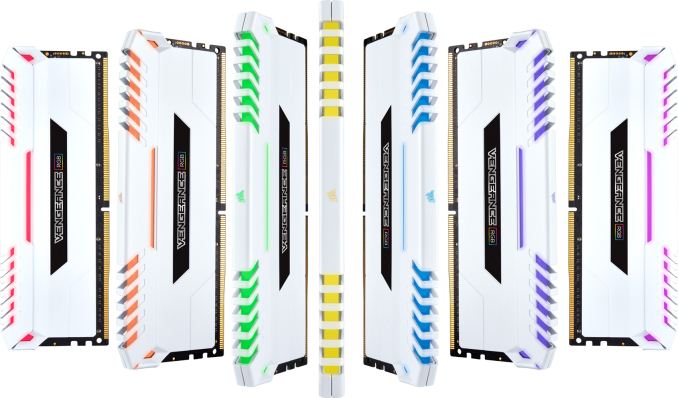
The Corsair Vengeance RGB White family of memory modules consists of 8 GB and 16 GB DIMMs (supposedly based on Samsung’s B-die ICs) running at DDR4-3000 CL15, DDR4-3200 CL16 and DDR4-3600 CL18 speeds. The modules require 1.35V, so an enthusiast-class motherboard that can increase DDR4 voltages is necessary. Like other Vengeance-series modules, the Vengeance RGB White DDR4 kits come with XMP 2.0 SPD profiles to make their setup easier on Intel's X99, Z170, Z270, Z370 and X299 platforms.
Just like their brethren from the original Vengeance RGB family with black heat spreaders, the Vengeance RGB White modules plug into regular DIMM slots and do not require any additional cables for RGB lighting. The latter can be controlled using the Corsair Link software, allowing users to synchronize colors of RGB lighting of their DIMMs and specific motherboard brands. Lighting of each module can be controlled separately as well. Besides, the RGB lighting can also be tuned using appropriate programs from manufacturers of motherboards — the ASUS Aura Sync, the GIGABYTE RGB Fusion and the MSI Mystic Light.Corsair Vengeance RGB White DDR4 DIMMs and Kits Data rate Latency Kit Capacity Modules Voltage Part Number Launch Price 3000 MT/s CL15 17-17-36 16 GB 2x8GB 1.35 V CMR16GX4M2C3000C15W $189.99 CL15 17-17-35 32 GB 4x8GB CMR32GX4M4C3000C15W $374.99 CL16 18-18-36 128 GB 8x16GB CMR128GX4M8C3000C16W $1469.99 3200 MT/s CL16 18-18-36 16 GB 2x8GB CMR16GX4M2C3200C16W $199.99 32 GB 2x16GB CMR32GX4M2C3200C16W $379.99 32 GB 4x8GB CMR32GX4M4C3200C16W $399.99 3600 MT/s CL18 19-19-39 16 GB 2x8GB CMR16GX4M2C3600C18W $204.99
The Corsair Vengeance RGB White lineup is now available directly from Corsair and from its resellers worldwide. Since we are dealing with unique products for enthusiasts/modders, they come at a premium price. For example the 16 GB DDR4-3200 CL16 and the 16 GB DDR4-3600 CL18 kits cost $199.99 and $204.99, respectively. The 32 GB kits are priced from from $374.99 to $399.99, whereas the 128 GB kit is available for $1469.99.
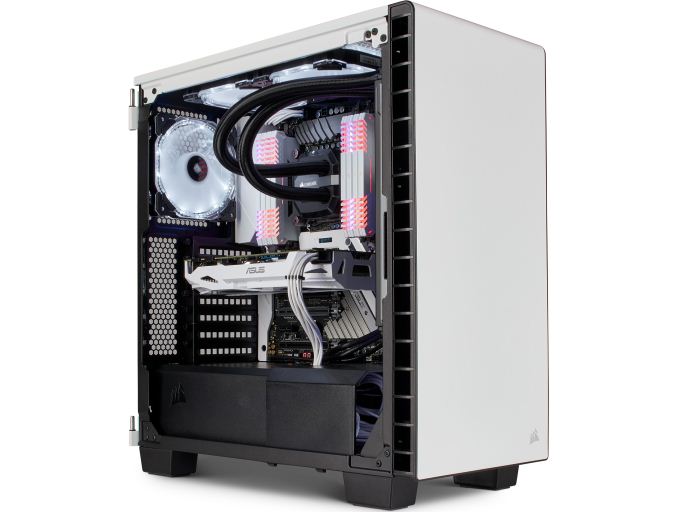
Gallery: Corsair Vengeance RGB White Family of DDR4 Memory Modules





Related Reading:
- Corsair Announces White Color Option for RM750x and RM850x Power Supplies
- Corsair Vengeance RGB DDR4 Memory Modules with LEDs Now on Sale
- Corsair Announces 16GB DDR4-4600 Vengeance LPX DRAM Kits
- DRAM and Motherboard Makers Demonstrate Quad-Channel DDR4-4000+ Operation
- The Corsair Neutron NX500 (400GB) PCIe SSD Review: Big Card, Big Pricetag
More...
Thread Information
Users Browsing this Thread
There are currently 30 users browsing this thread. (0 members and 30 guests)





 Quote
Quote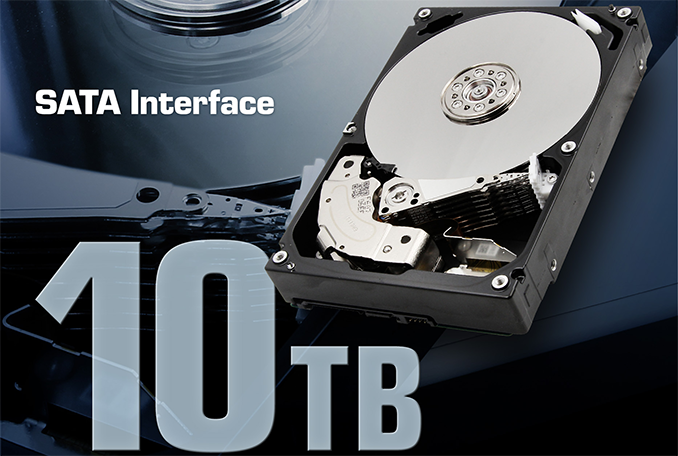

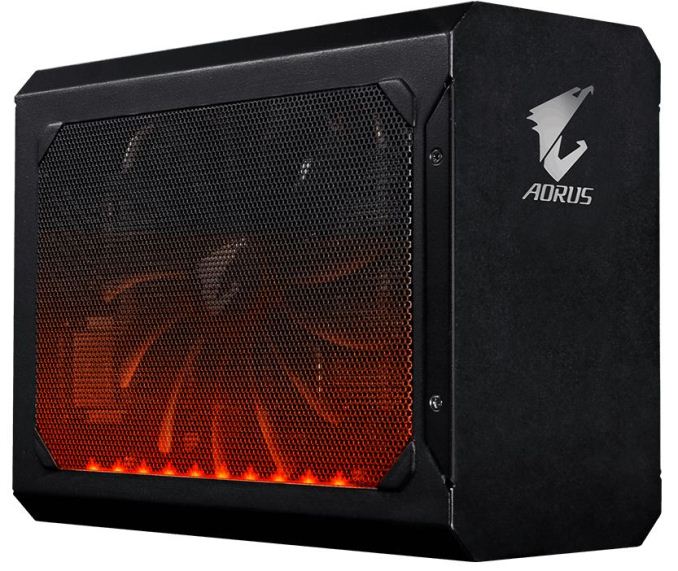
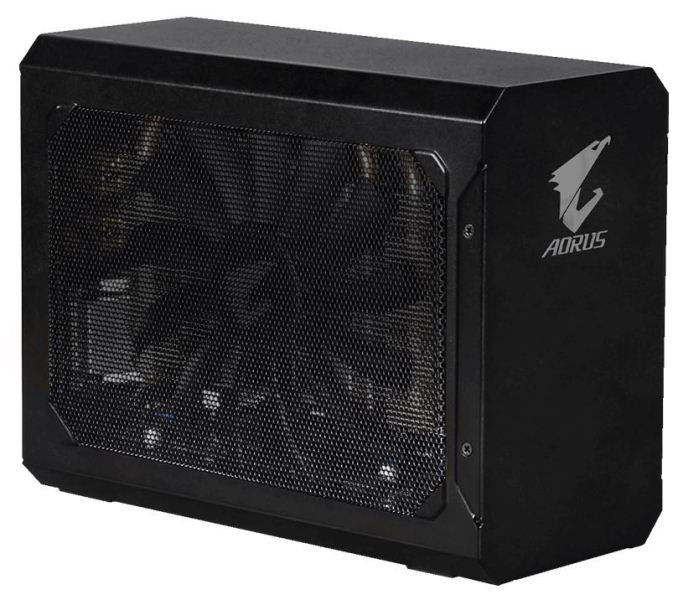
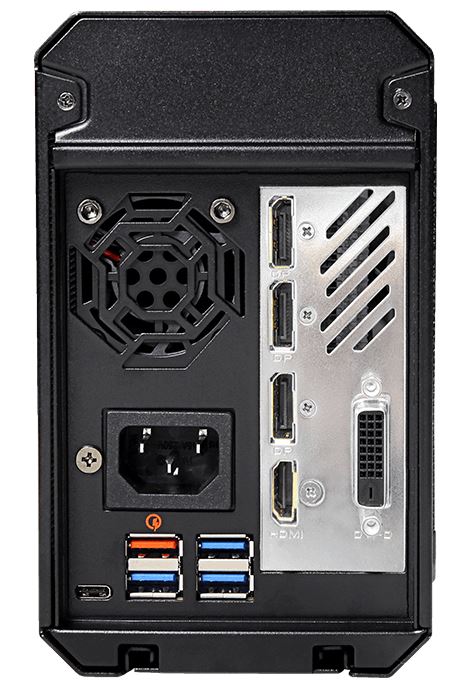
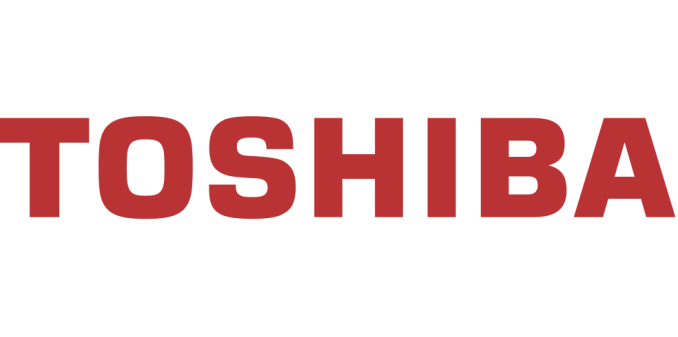
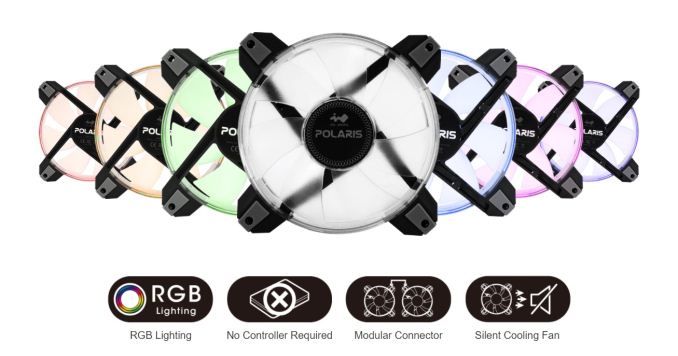
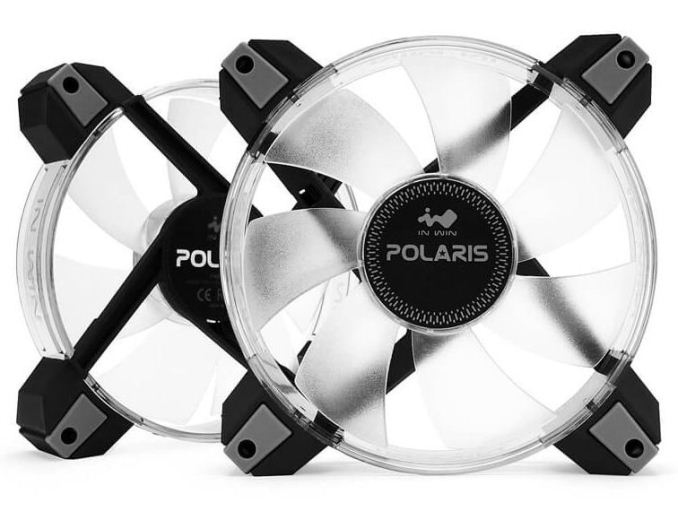
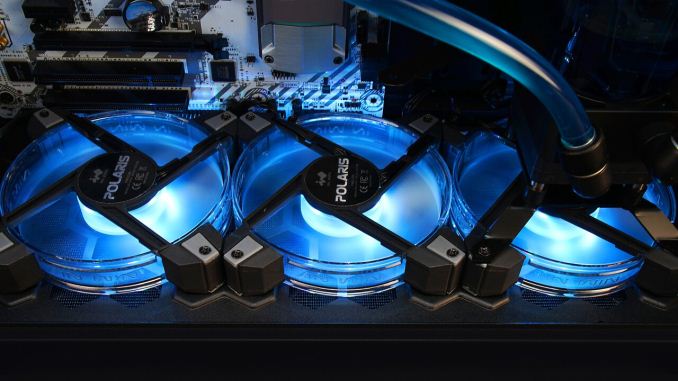
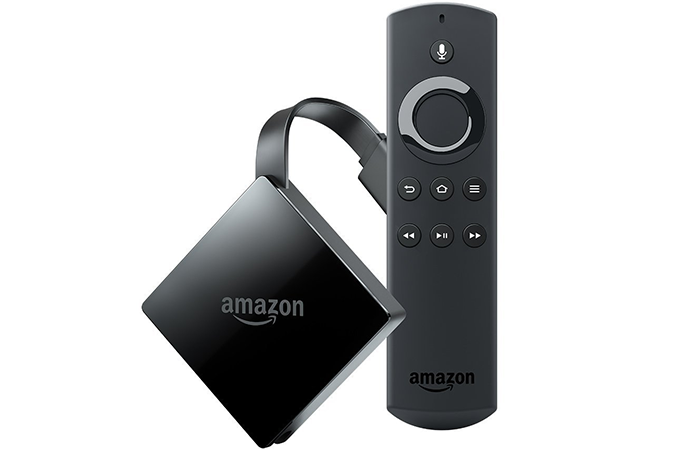
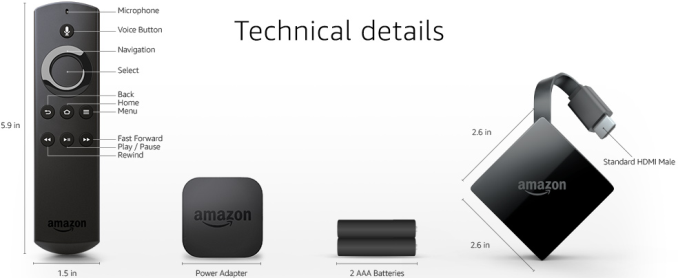
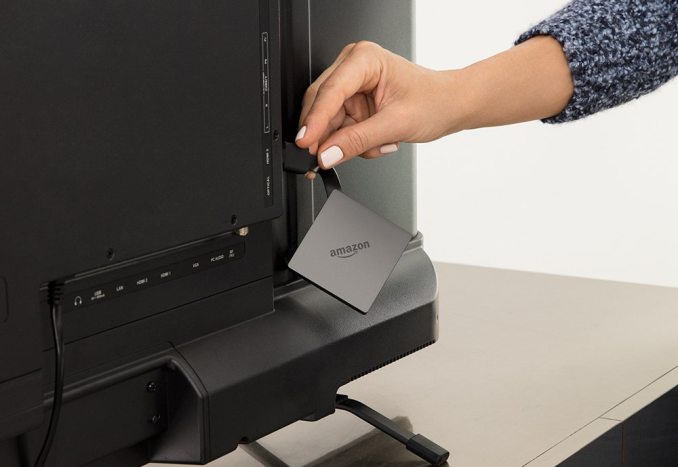


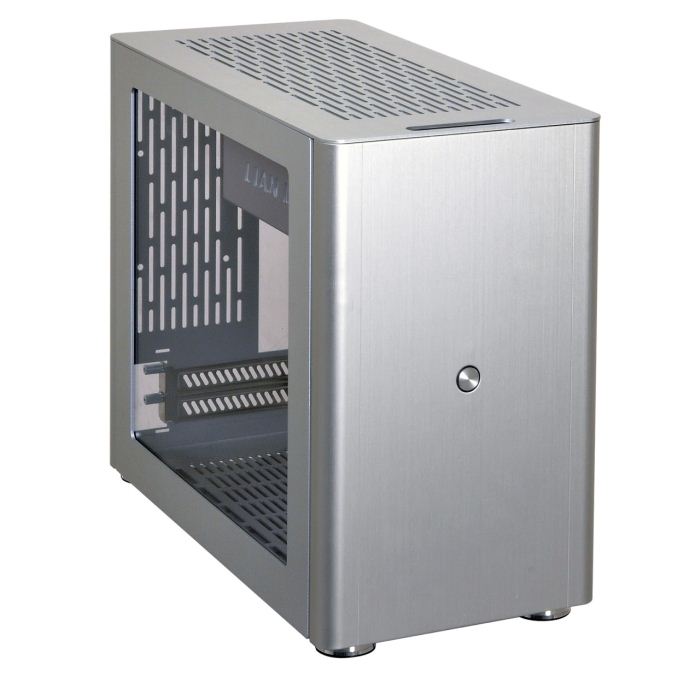
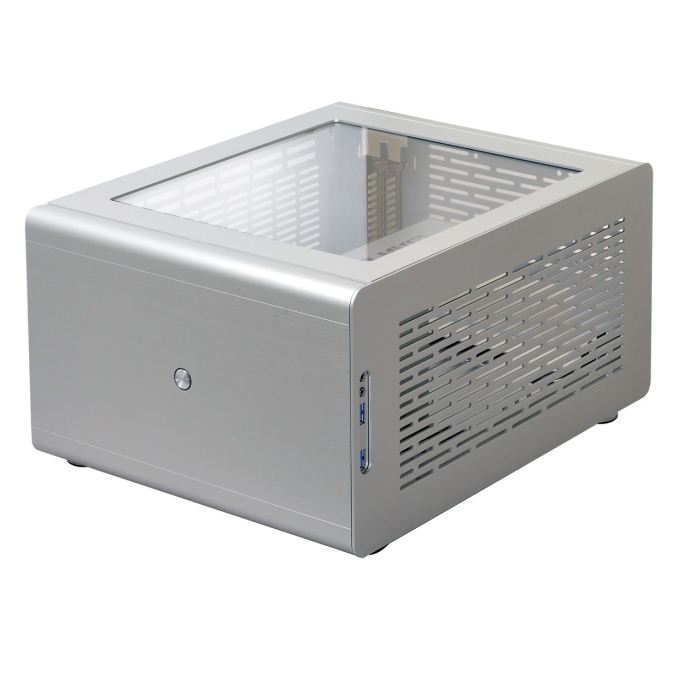
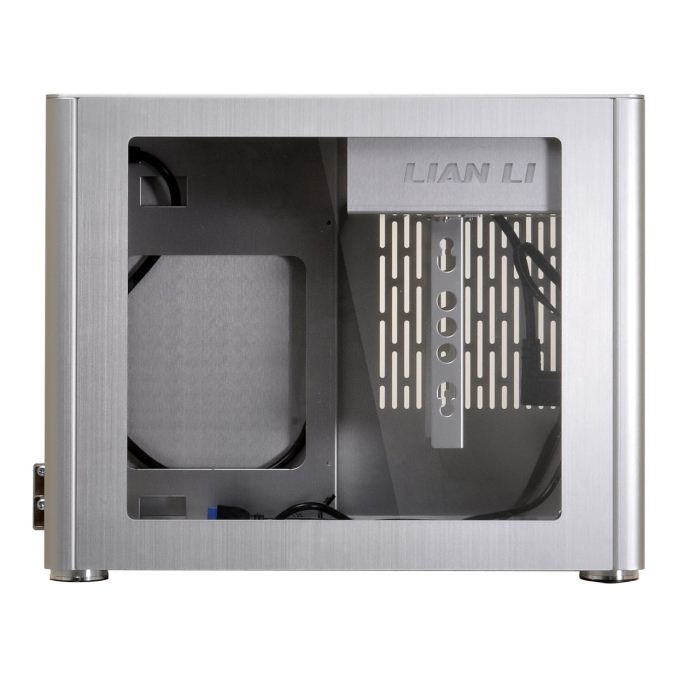
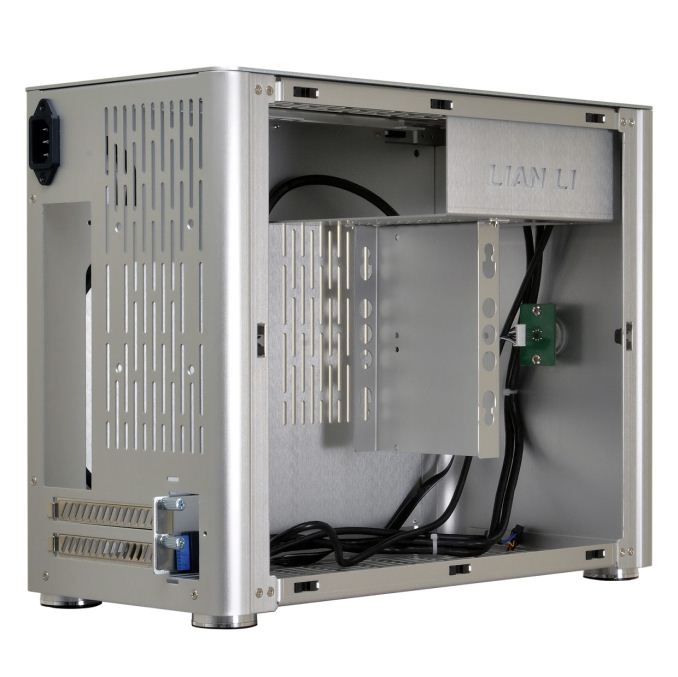
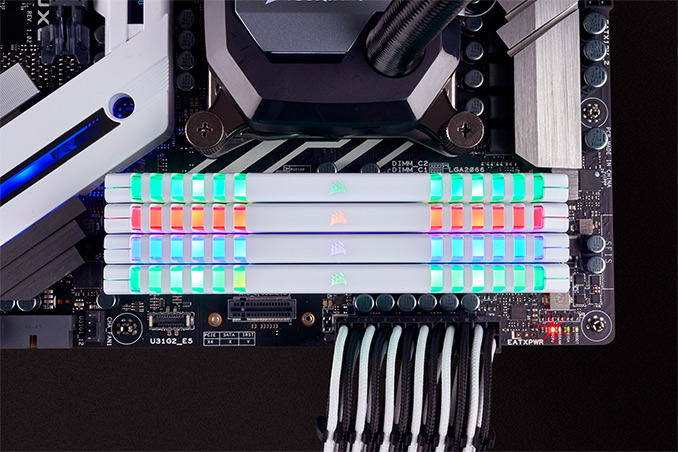
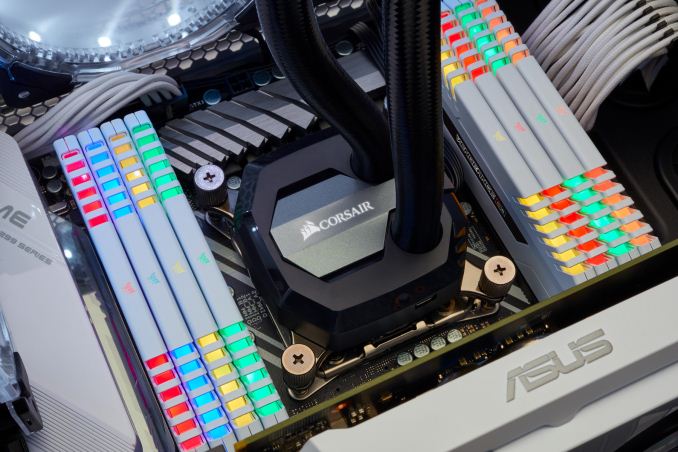
















Bookmarks